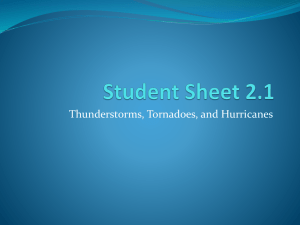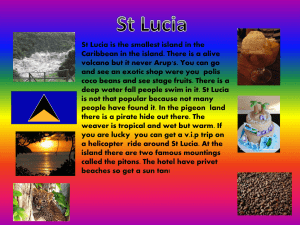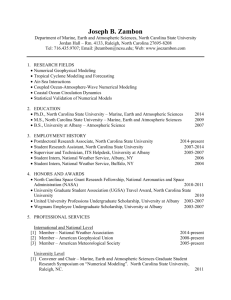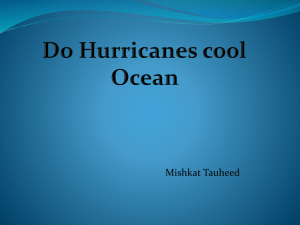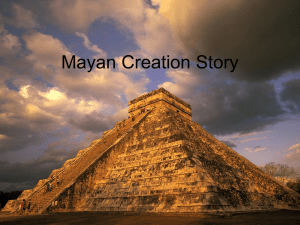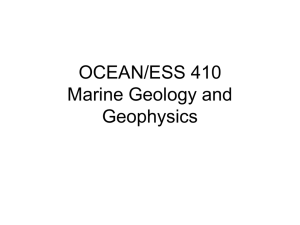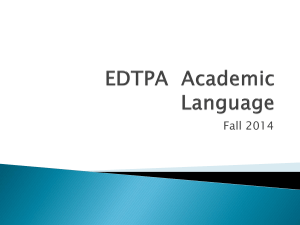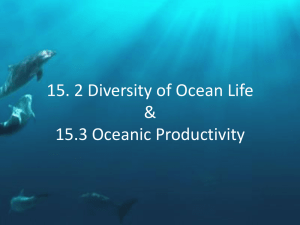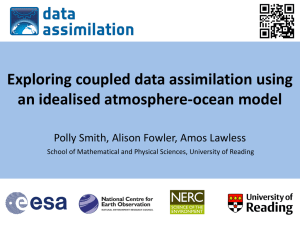NCSU COAWST Nowcast/Forecast Modeling System
advertisement
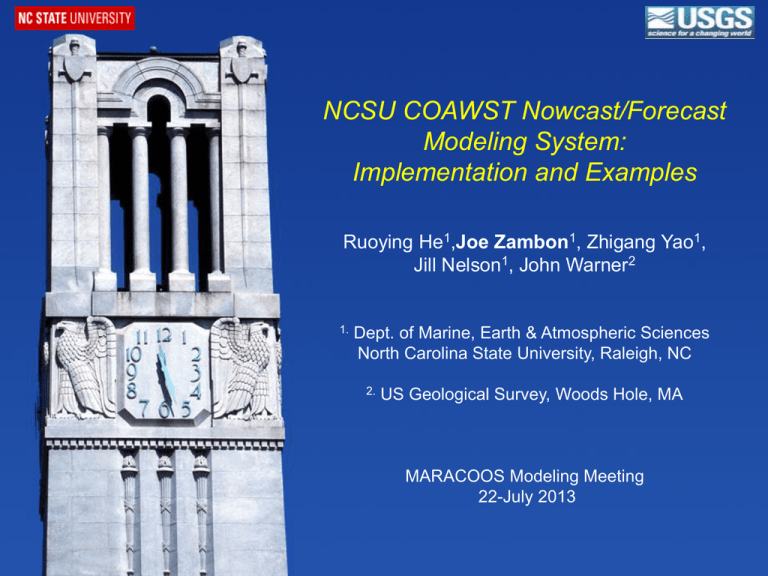
NCSU COAWST Nowcast/Forecast Modeling System: Implementation and Examples Ruoying He1,Joe Zambon1, Zhigang Yao1, Jill Nelson1, John Warner2 1. Dept. of Marine, Earth & Atmospheric Sciences North Carolina State University, Raleigh, NC 2. US Geological Survey, Woods Hole, MA MARACOOS Modeling Meeting 22-July 2013 COAWST Coupled Ocean– Atmosphere – Wave – Sediment Transport Modeling System to investigate variability of coastal environments C = Coupled O = Ocean A = Atmosphere W = Wave ST = Sediment Transport MCT v 2.6.0 http://www-unix.mcs.anl.gov/mct/ ROMS svn 455 http://www.myroms.org/ WRF v 3.4 http://www.wrf-model.org/ SWAN v 40.81 http://vlm089.citg.tudelft.nl/swan CSTMS http://woodshole.er.usgs.gov/projectpages/sediment-transport/ Modeling System Latitude ATMOSPHERE WRF wind speed Longitude Hwave, Lmwave, Lpwave, Dwave, Tpsurf, Tmbott, Qb, Dissbot, Disssurf, Disswcap, Ubot ROMS SST MCT SWAN Hsig us, vs, h, bath, Z0 OCEAN WAVE NCSU COAWST-ROMS Configuration (USeast coast - Gulf of Mexico - Caribbean) Atmospheric forcing Model resolution : 7~10 km Model Grid points : 482x402 Vertical Layer : 36 River USGS River discharge Tides (7 Constituents) OTIS 1/12°Atlantic Ocean (M2, S2, N2, K2, O1, K1, Q1) Topography 2-Minute Gridded Global Relief Data (ETOPO2v2) Initial and boundary 1/12°Global HYCOM NCODA Solutions NCSU COAWST-SWAN Configuration (USeast coast - Gulf of Mexico - Caribbean) Atmospheric forcing Model resolution : 7~10 km Model Grid points : 482x402 Initial and boundary 1/2° WW III Solutions Topography 2-Minute Gridded Global Relief Data (ETOPO2v2) NCSU COAWST-WRF Configuration (USeast coast - Gulf of Mexico - Caribbean) Model grid • 392x459 grid points, 9-km grid spacing • 31 Vertical Levels NCEP GFS used for Initial/Lateral Boundary Conditions Vortex-Following Moving Nest (for hurricane) • 400x400, 31 Vertical Levels, 3-km grid spacing Validation against Various Ocean Observations Mean SSH (Jul-Dec, 2012) Mean SSH (Jul-Dec, 2012) Florida Transport Sub-tidal sea level Florida Current Transport F48 F36 F24 Hurricane Sandy Validation against NHC data F12 NHC Best Track COAWST Simulation F00 Intensity (hPa) NHC Data COWAST Simulation Strength (ms-1) • Hurricane track (upper) • Hurricane Intensity (upper right) • Hurricane strength (lower right) F00 through F48 U (m/s) 44695 • • NDBC buoy observation COAWST simulation V (m/s) SLP (hpa) U (m/s) 44009 U (m/s) V (m/s) V (m/s) SLP (hpa) SLP (hpa) 44025 COAWST simulation of Winter Extratropical Cyclone (ETC) There are on average,12 east coast ETCs per winter. They arguably cause more damage to the U.S. east coast than tropical storms and hurricanes due to the frequency of their occurrence, long duration, and widespread societal, economic, and environmental impacts. Neslon, J (2011) Nelson and He (2012) Widespread rain, snow, and ice Strong winds and extreme cold Affects densely populated areas Coastal storm surge and flooding Severe beach erosion Commercial fishing industry affected 11 January 22- 24, 2005 “Bomb” cyclones deepen at least 1 mb/hr for 24 hrs Model/Data Comparisons Surface Air Temperature Shelf water Temperature 14 January 2005 Model T Glider T NCSU COAWST Nowcast/Forecast Web portal COAWST related publications • Warner, J.C., Armstrong, B., He, R., and Zambon, J.B. (2010), Development of a Coupled OceanAtmosphere-Wave-Sediment Transport (COAWST) modeling system: Ocean Modeling, v. 35, no. 3, p. 230-244. • Kumar, N., Voulgaris, G., and Warner, J.C. (2011). Implementation and modification of a threedimensional radiation stress formulation for surf zone and rip-current applications, Coastal Engineering, 58, 1097-1117, doi:10.1016/ j.coastaleng.2011.06.009. • Olabarrieta, M., J. C. Warner, and N. Kumar (2011), Wave-current interaction in Willapa Bay, J. Geophys. Res., 116, C12014, doi:10.1029/2011JC007387. • Kumar, N., Voulgaris, G., Warner, J.C., and M., Olabarrieta (2012). Implementation of a vortex force formalism in a coupled modeling system for inner-shelf and surf-zone applications. Ocean Modeling. • Olabarieta, M., Warner, J., Armstrong, B., Zambon, J., and He, R. (2012), Ocean-Atmosphere Dynamics During Hurricane Ida and Nor’Ida: An Application of the Coupled Ocean-AtmosphereWave-Sediment Transport (COAWST) Modeling System, Ocean Modelling, 43-44, 112-137. • Xue, Z., He, R., Liu, J. P, J. C. Warner (2012), Modeling Transport and Deposition of the Mekong River Sediment, Continental Shelf Research, doi:10.1016/ j.csr.2012.02.010. • Nelson, J. and He. R. (2012), Effect of the Gulf Stream on Winter Extratropical Cyclone Outbreaks, Atmospheric Research Letter, doi: 10.1002/asl.400. • Zambon, J.B., He, R., Warner J.C (2013). Prediction of Hurricane Ivan using a Coupled OceanAtmosphere-Wave-Sediment Transport (COAWST) Modeling System, Weather and Forecasting, in review
